Imaging Projects
In this blog, I will share the results of all of my imaging projects. The newest will be at the top and the oldest will be further down the stack. Going back in time here is interesting - some of my early stuff was pretty rough - but I did not see it that way at the time - I was thrilled to get anything back that looked like an image! Hopefully, you will see how my work has progressed with time!
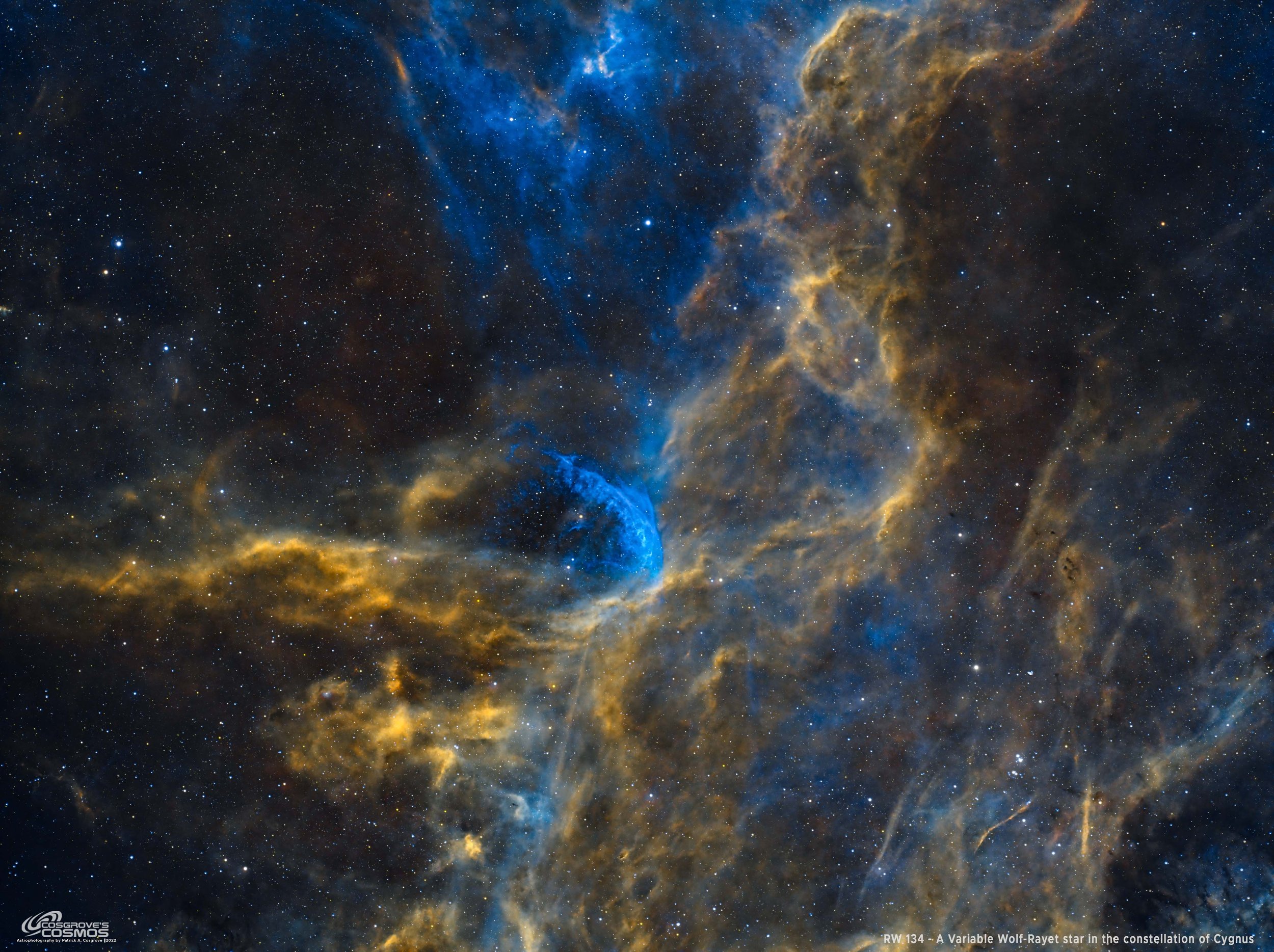
WR 134 - A Wolf-Rayet Star Region In Cygnus- 15.5 Hours in SHO
This is the third and final Imaging Project resulting from data collected during a recent - and very rare for this year - clear string of nights!
This is WR134 - a Variable Wolf-Rayet Star located 6,000 light-years away in the constellation Cygnus. This is a very interesting and rich area of the sky with a lot of objects in view. This includes WR134, WR135, and WR137 - the very first Wolf-Rayet stars ever found. These stars stood out as they had broad emission lines in their spectra instead of just absorption lines typically seen in stars.. These stares are massive and hot and have short lives.
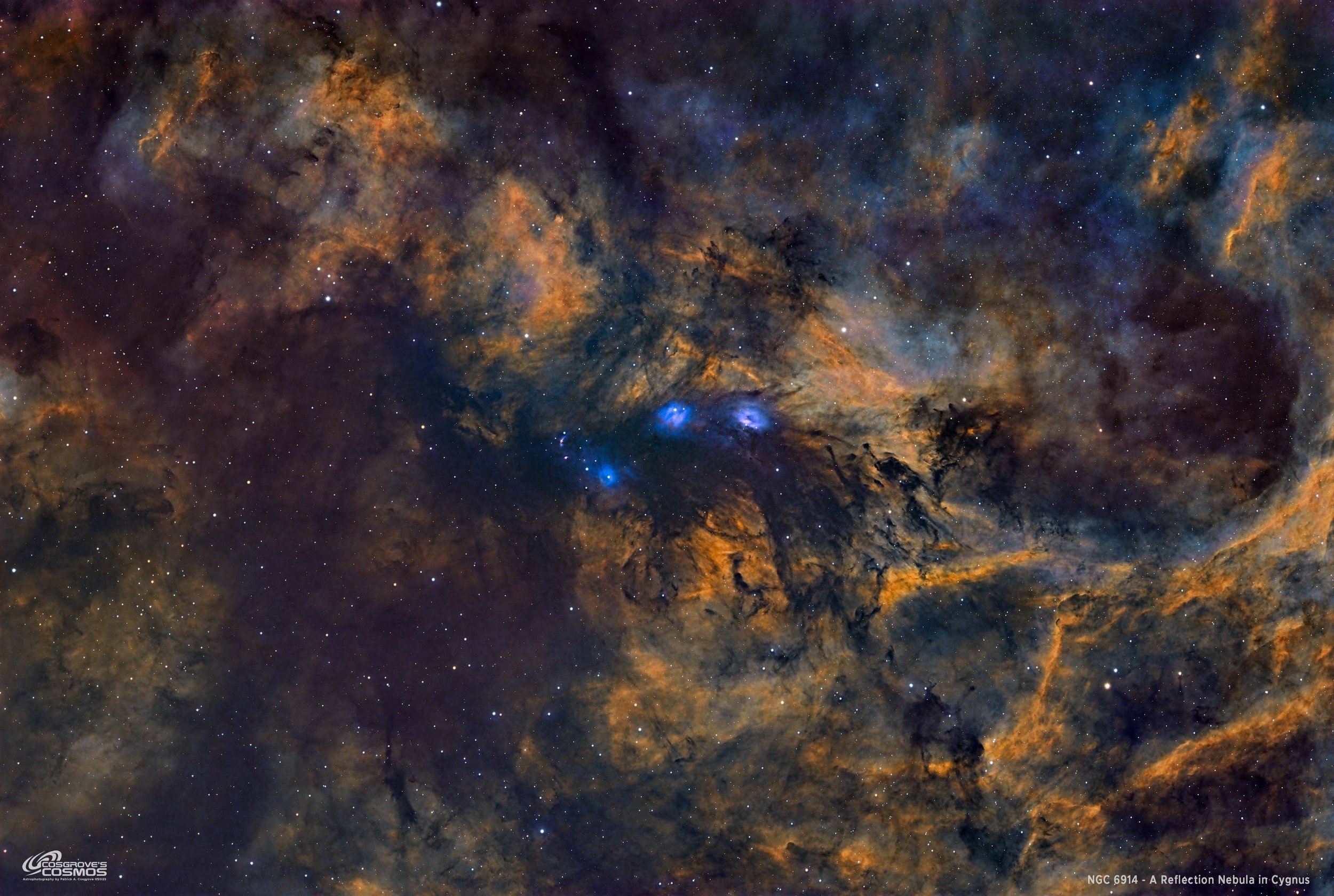
NGC 6914 - The Spider Nebula (my name!) - 14.5 Hours in SHOrgb
This is the second Imaging Project resulting from data collected during a recent - and very rare this year - clear string of nights!
This is NGC 6914 - a rich HII region located 6,000 light-years away in Cygnus. Typically shot in broadband RGB, decided to go after a narrowband version. This one resulted from 14.5 hours of SHOrgb data. The stars are broadband RGB, and the nebula is SHO Narrowband.
This object has no common name and I am proposing that we call it “The Spider Nebula!”
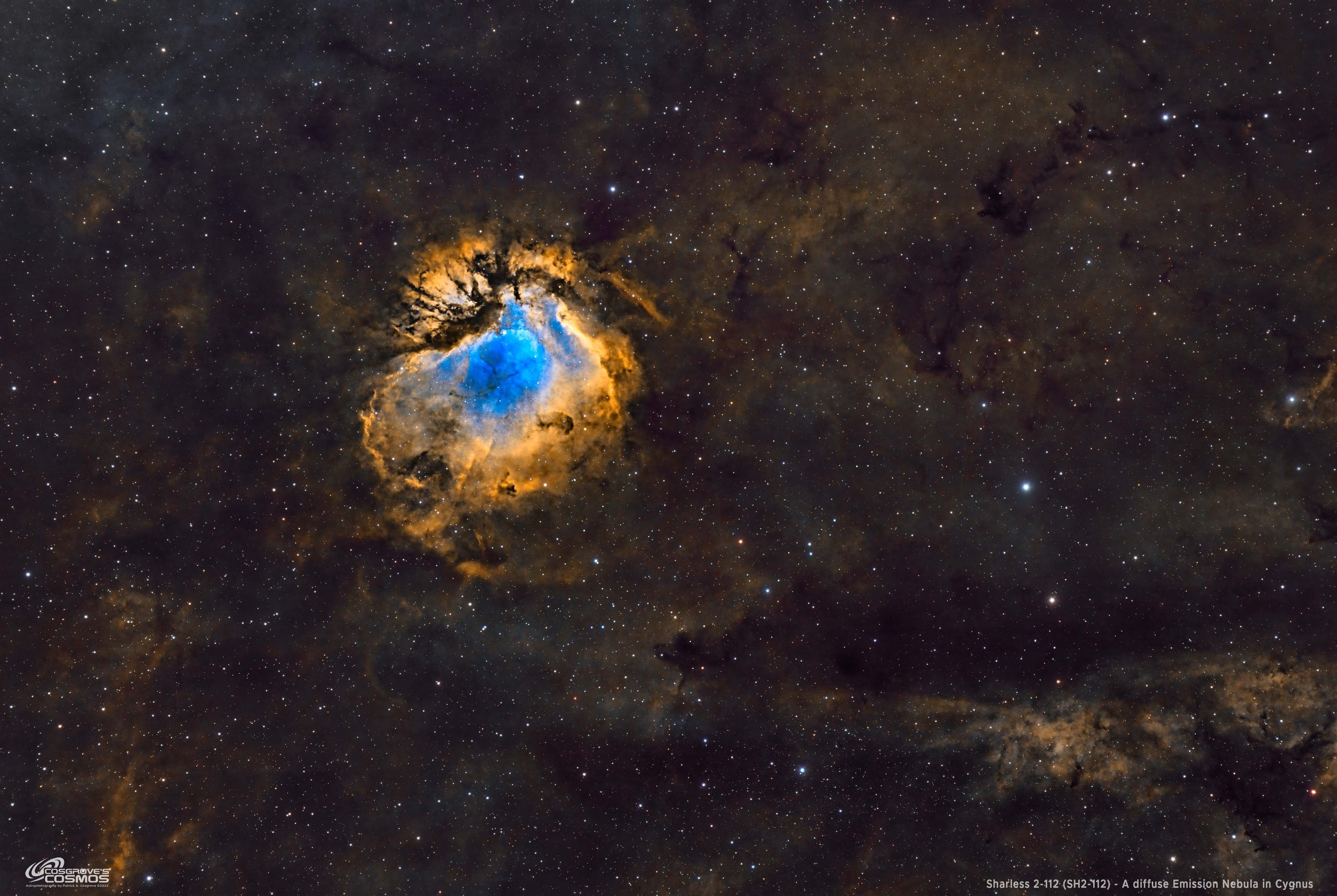
SH2-112 - A Diffuse Emission Nebula in Cygnus - 15.7 Hours in SHOrgb
Finally! Some clear nights and some new fresh from the universe photon data! This imaging project covers SH2-112 - A diffuse emission nebula located about 5,600 light-years away in Cygnus. This is the result of 15.6 hours of SHOrgb data. Not of lot of info is available about this beautiful object, but I find it fascinating to study!
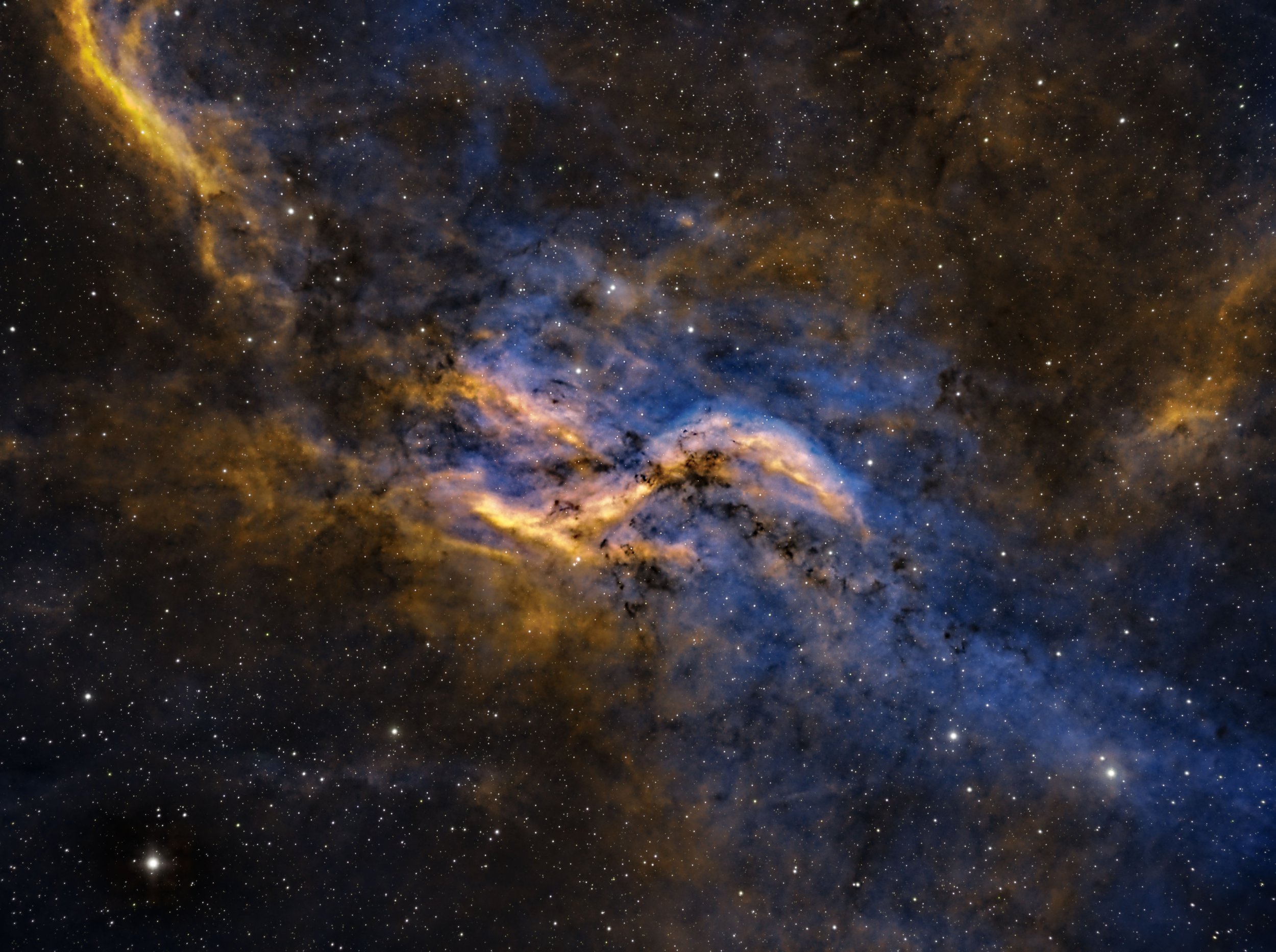
DWB 111/119 - A Reprocess of The Propeller Nebula - in SHO ~ 10 hours
This is a Reprocessing Project for data collected for DWB 111/119 in Sept of 2021.
I was never happy with the initial image. I wanted to see if I could make it better. I had a really hard time figuring out where I wanted this image to go - I think the final version is better than the original but I am not sure. You judge!
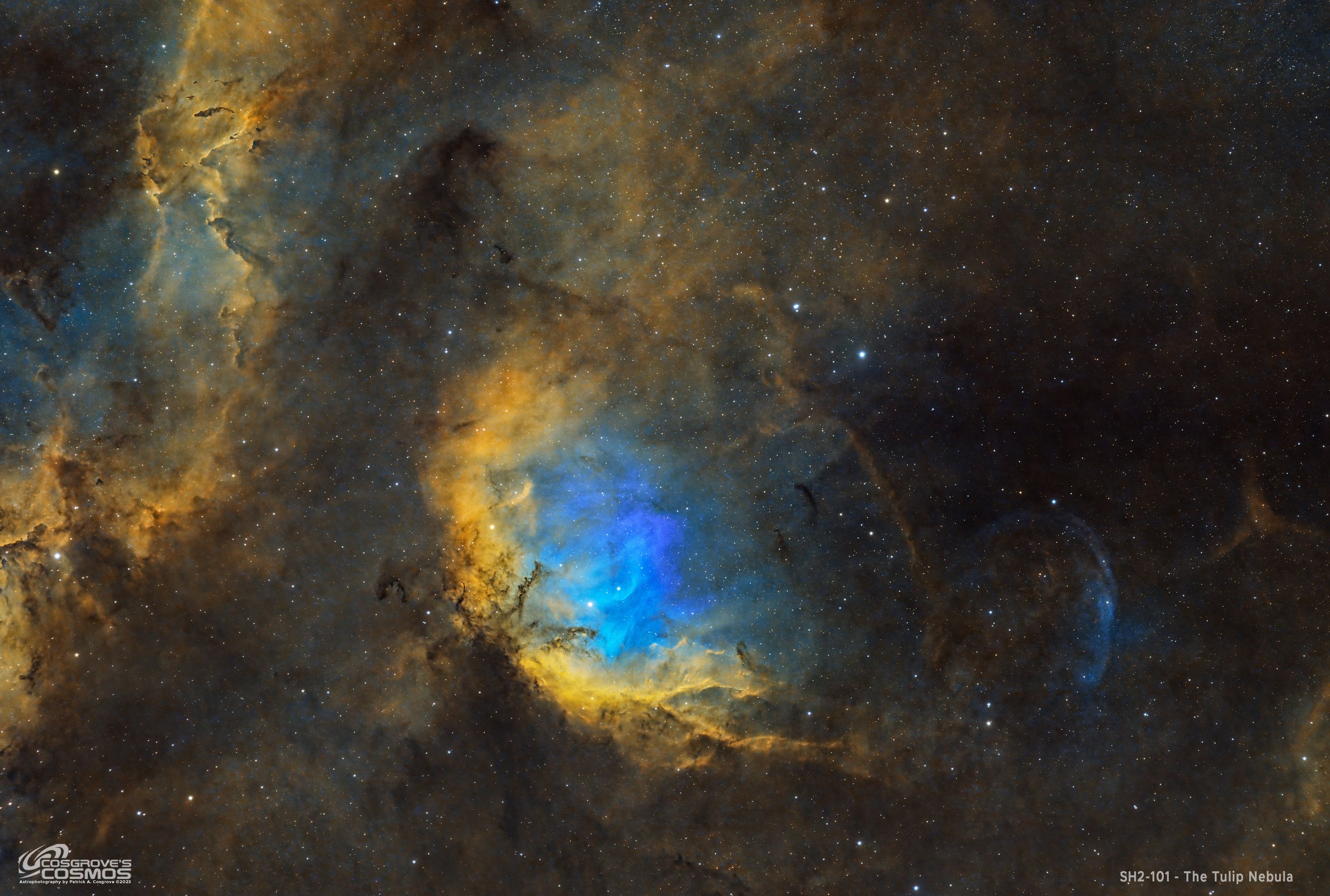
SH2-101 - A Reprocess of The Tulip Nebula - 12.8 Hours in SHOrgb
This is a REPROCESSING PROJECT for Sharpless 101 (specifically Sh2-101) also known as the Tulip Nebula. This object is located approximately 6000 light-years away in the constellation of Cygnus (The Swan). This was a 12.8-hour integration with the AP130 platform using the ZWO ASI2600MM-Pro Camera.
I was able to significantly improve the image and am quite pleased with the improvement I was able to produce - but you be your own judge of this!
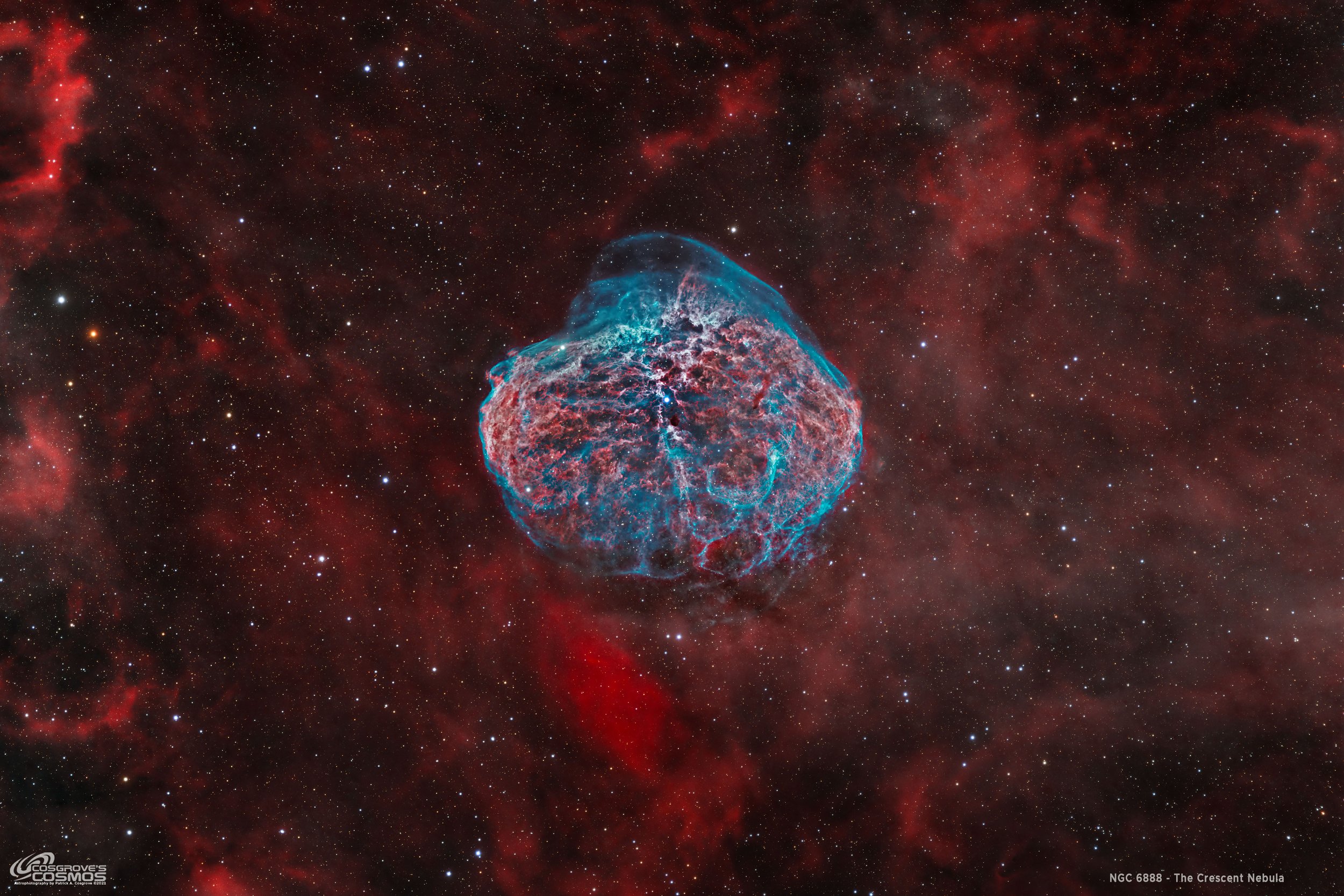
NGC 6888 - A Reprocess of The Crescent Nebula ~11 hours in HOOrgb
NGC 6888 - The Crescent Nebula is a famous emission nebula located in the constellation of Cygnus. This is a reprocessing project using image data first captured in September 2022.
SInce. I have no new data to process due to the wildfire smoke, I decided to use some new tools and processes to see if i could pull more details out from the O3 shell that surrounds the nebula.
THe resulting image show much more O3 detail - including some interesting convection cells towards the bottom of the nebula
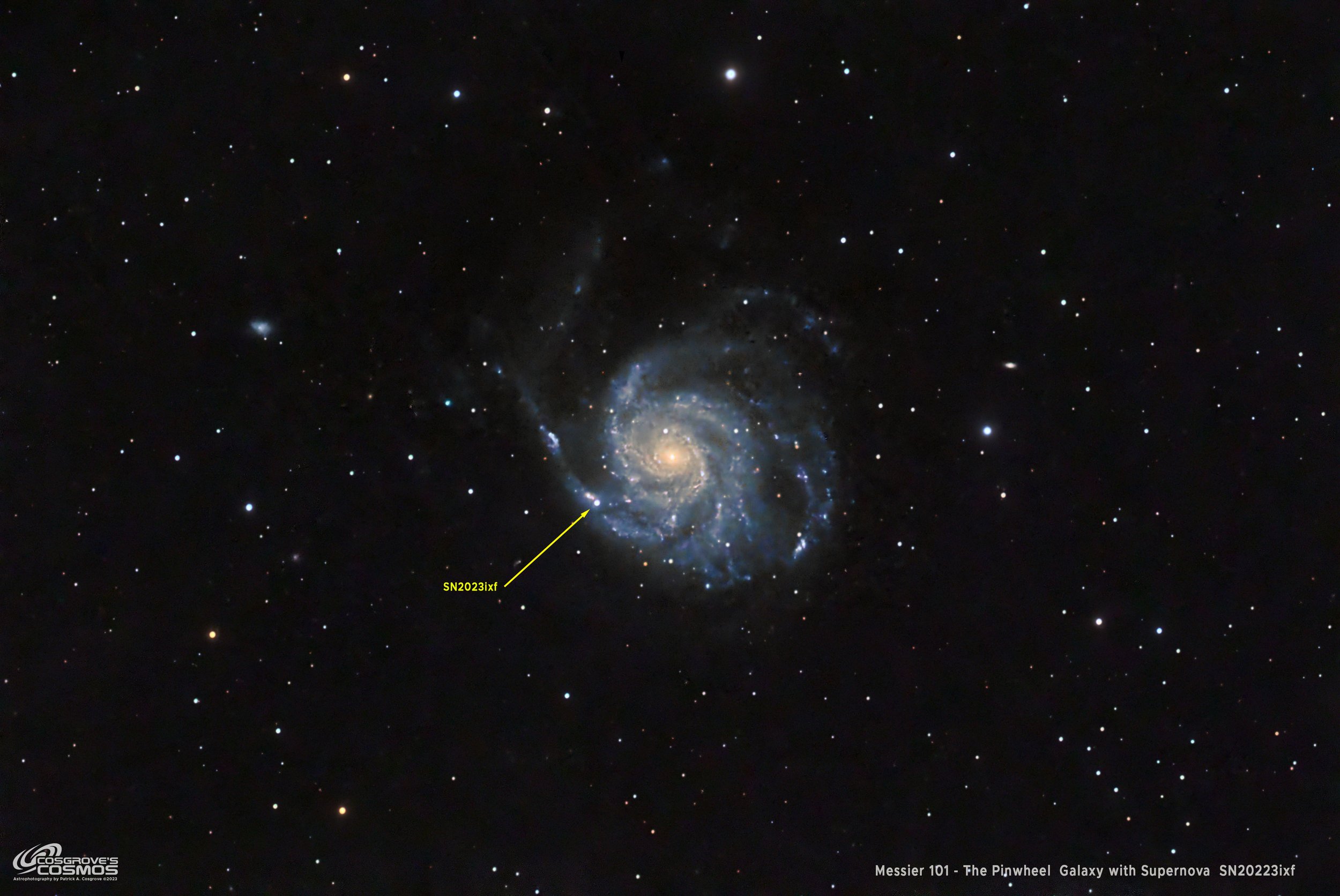
Messier 101 Supernova SN2023ixf ~3 Hrs in LRGB - Yet Another Supernova Shot - But This One Is Mine!
With the recent discovery of a bright supernova in the well-known Messier 101 - The Pinwheel Galaxy - a lot of astrophotographers have been going out of their way to grab an image of this galaxy during this event.
As a result, there are many - probably TOO many - images of this going around.
So why take an image myself? Is it because I think I can do better? NOPE! After all, I shot this on a widefield scope not suitable for galaxies, and I ended up shooting through smoke and with too little integration. So why do it?
Well - I wanted my own image of this event- and I wanted an excuse to explore what supernovae really are - after all - here I am looking at one!
So this posting will delve into this topic….

Messier 102 - The Spindle Galaxy - 2.0 Hrs in LRGB - Still Shooting Through the Smoke…
Messier 102, also known as NGC 5866 and the Spindle Galaxy, is located 50 Million light-years away in the constellation of Draco. Its diameter is 60,000 light-years, making it 2/3rds the size of our Milkyway even though it has about the same mass.
NGC 5866 is one of the two galaxies known as the Spindle Galaxy. The other, NGC 3115, is an edge-on lenticular galaxy located in the constellation Serpens.
This was another image from the lul in the smoke plumes from Alberta. Because of this, this image was starved for integration time and shot through some smoke still in the sky - so this image is not as good as I would like it to be. But - if you zoom in, you can see a lot of detail in the galaxy's dust lane!
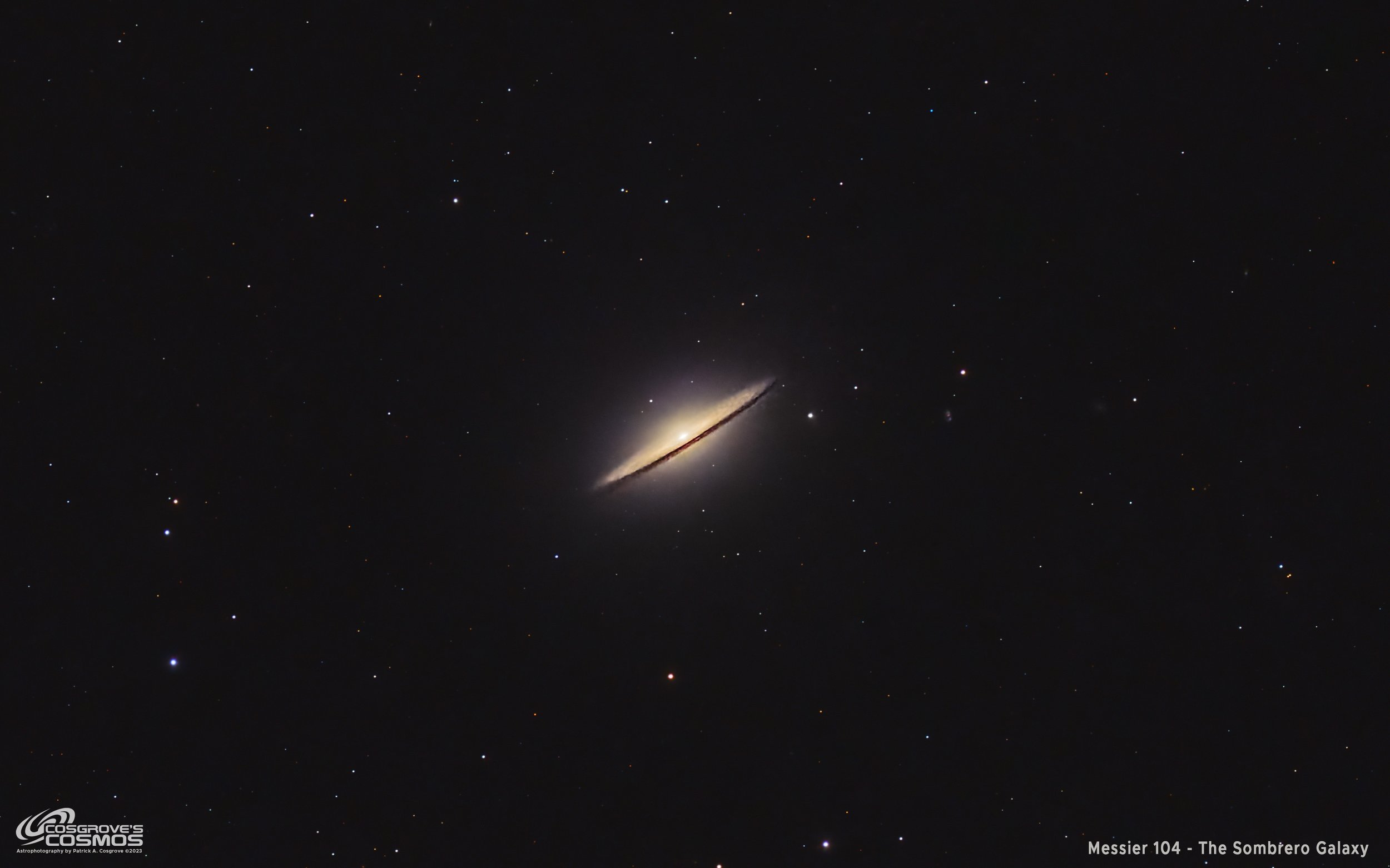
Messier 104 - The Sombrero Galaxy - 1.7 Hrs in LRGB - Too Little Time, Too Low in the Sky, Too Much Smoke…
Messier 104, also known as the Sombrero Galaxy, is a stunning sight in the night sky. Located in the constellation Virgo, this galaxy stands out due to its unique shape. With a bright central bulge surrounded by a flat disk of stars, it resembles a sombrero hat. It is estimated to be approximately 28 million light-years away from Earth and spans about 94,000 light-years across.
I have always wanted to shoot this target, but this project produced a result far below what I was shooting for as conditions were poor (smoke plumes), and integration ended up being a ridiculous 1.7 hours!
Surprisingly the resulting image is not that bad. It's not good, either.
It did better than expected because of its capable Camera. But at least I have a baseline for when I shoot this target again n the future!
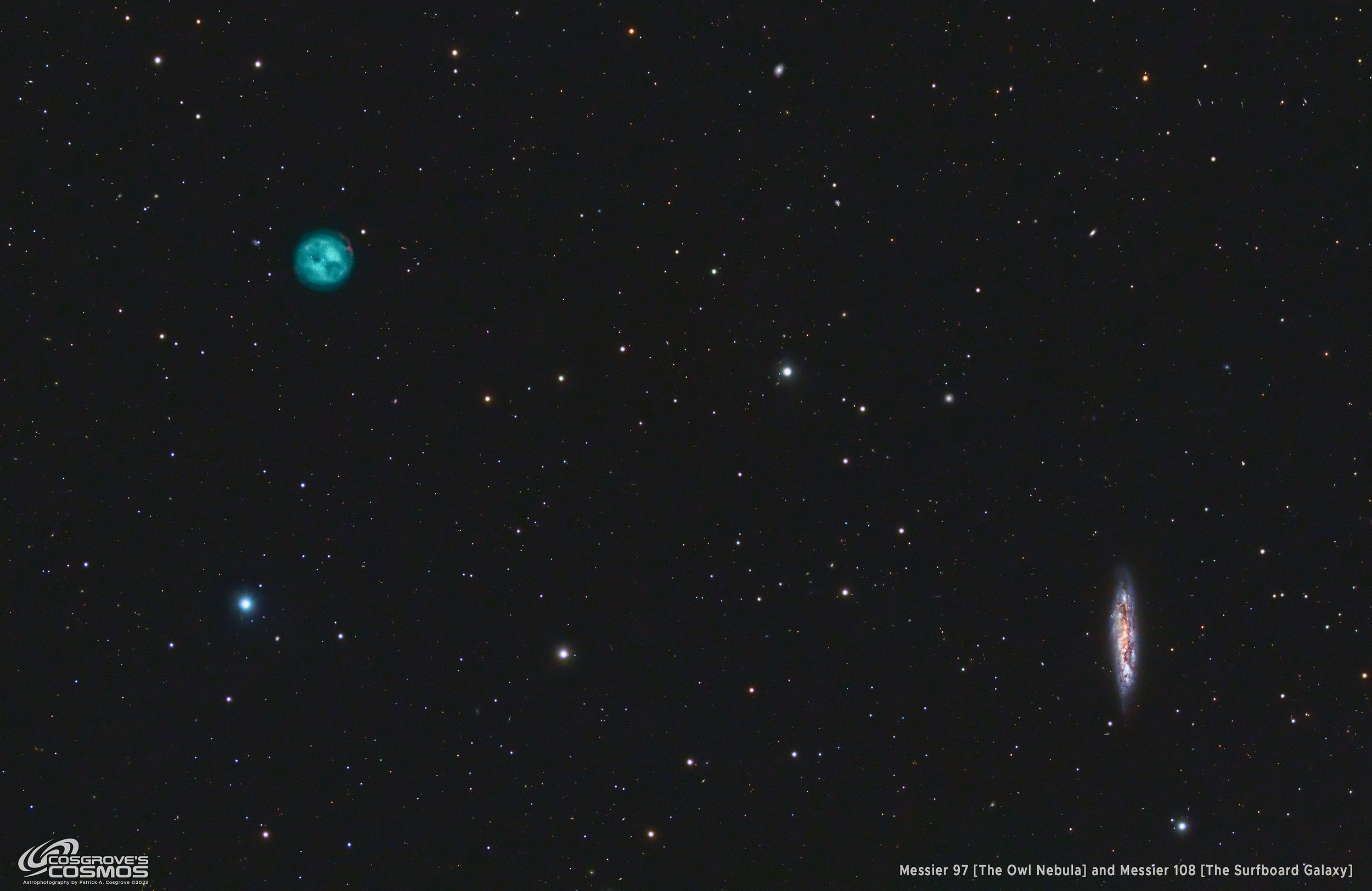
Messier 97 - The Owl Nebula and Messier 108 - The Surfboard Galaxy - 4 hours LRGB
This imaging project captures two messier objects in the same field of view!
Messier 97 is a planetary nebula better known as the Owl Nebula.
Messier 108 is better known as the Surfboard Galaxy.
This image resulted from just under 4 hours of LRGB exposure. It was shot on my William Optics 132mm Plaform after being upgraded with a flattened/0.8X Reducer and a new ZWO ASI12600MM-Pro camera.
This image was the first project I have been able to do in 2023 and was taken on two nights when the Jet Stream pushed the Smoke Plume from the Alberta Wildfires to the south of us. But this image still suffered from smoke effects!
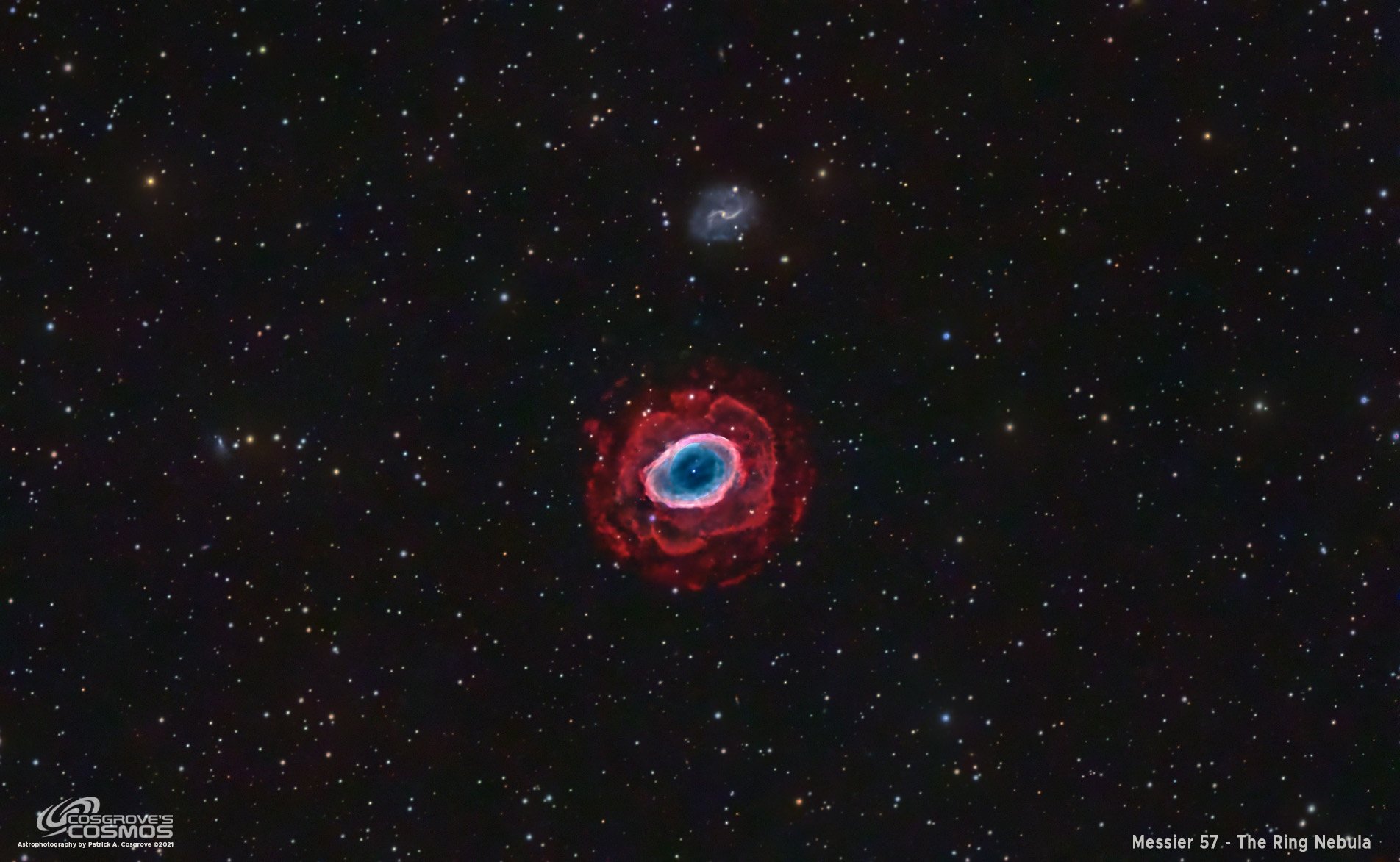
Messier 57 - A Reprocess of The Ring Nebula - 14.7 hours in LHaRGB!
Messier 57, the Ring Nebula has long been a visual favorite of mine. This was a reprocess of data that was collected in 2022. Based on 14.7 hours of HaLRGB, this data showed the rarely seen outer shell. I wanted to see if I could improve on that image with advanced tools and techniques. Since the original image was published, I created a new imaging project for posting to contain both the old and the new versions in the collection.

Messier 27 - A Reprocess of My Dumbbell Nebula Data in SHO - (10.25 Hours)
This imaging project is not a recapture of data for M27 - the Dumbell Nebula. Rather it is an effort to reprocess old data using new tools and new processing methods to address some concerns I had about the original image - where I thought that the stars were bloated and unsharp, and that I thought I should be able to bring out more detail in the amazing outer gas shells that narrowband imaging shows for this target.
